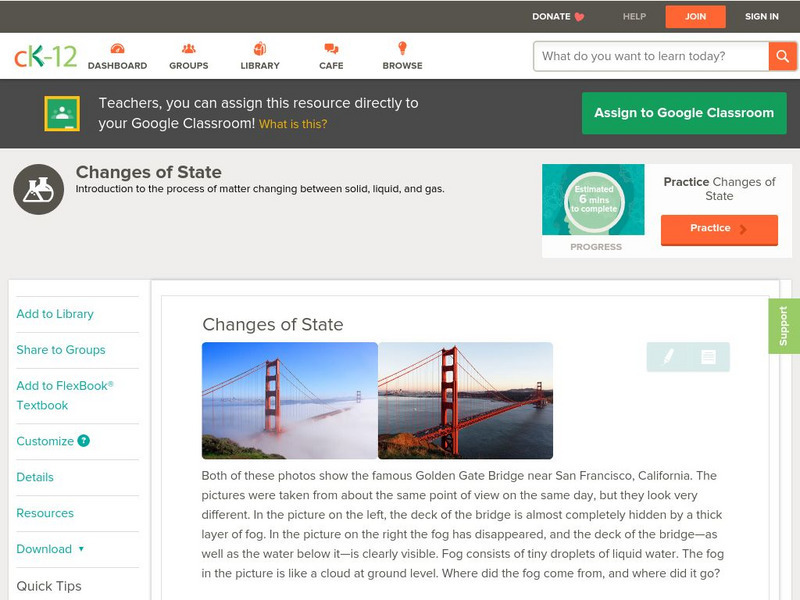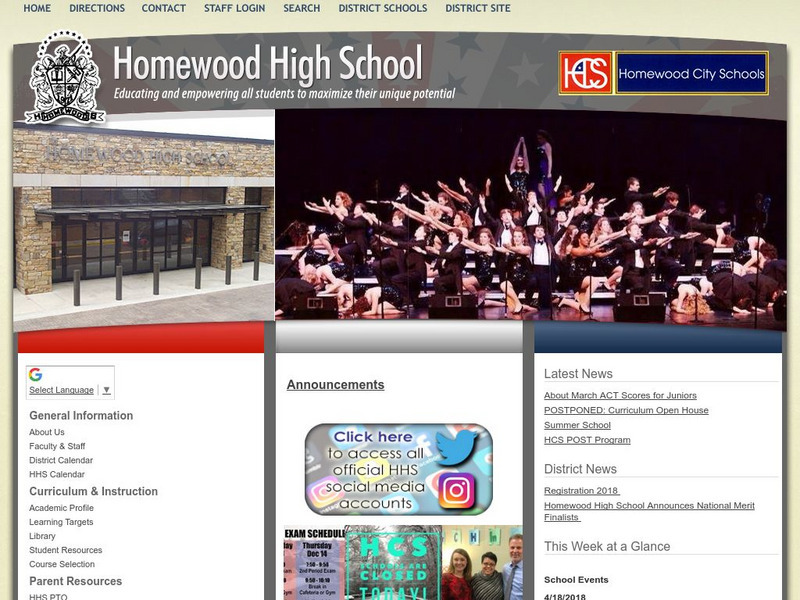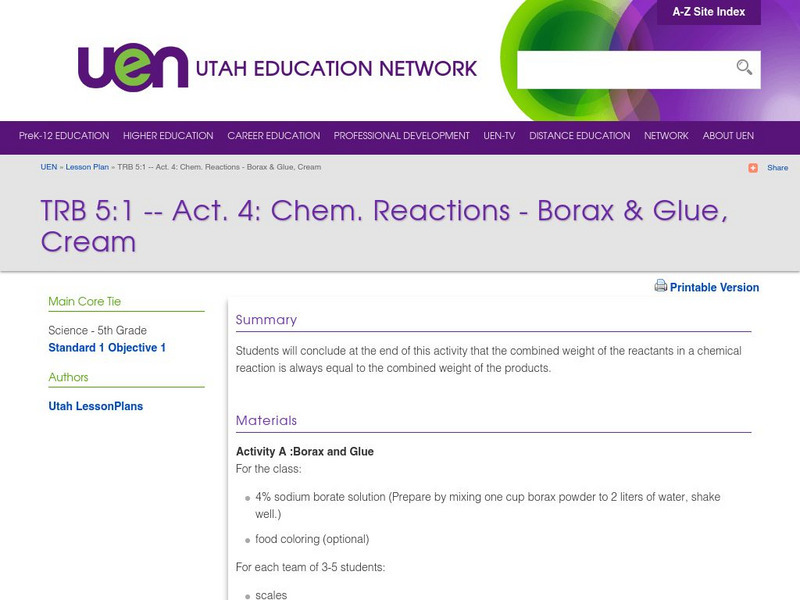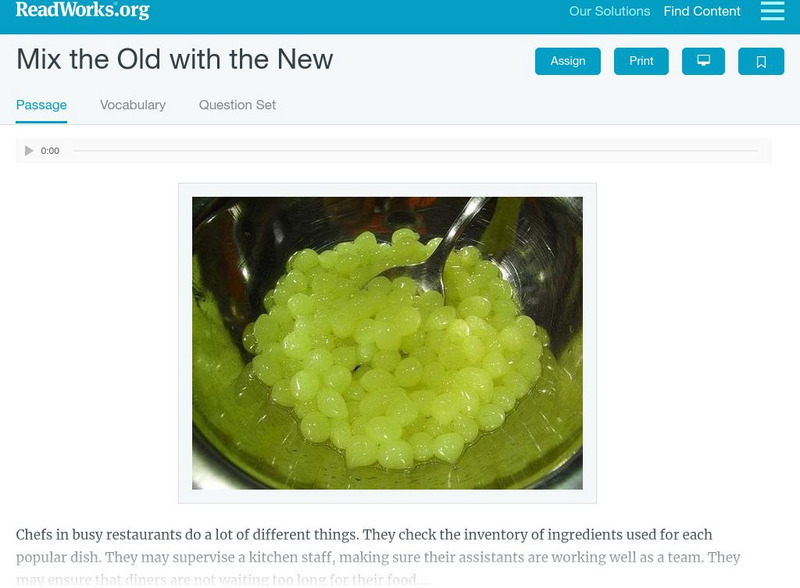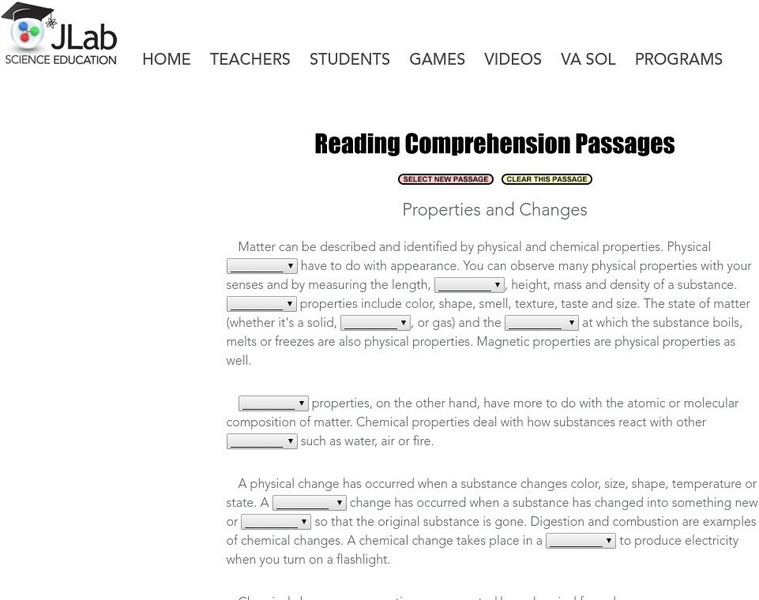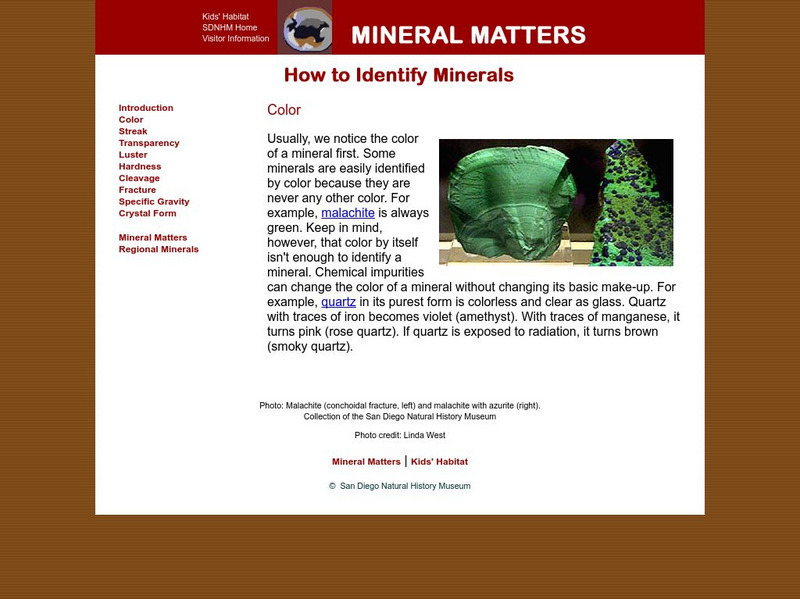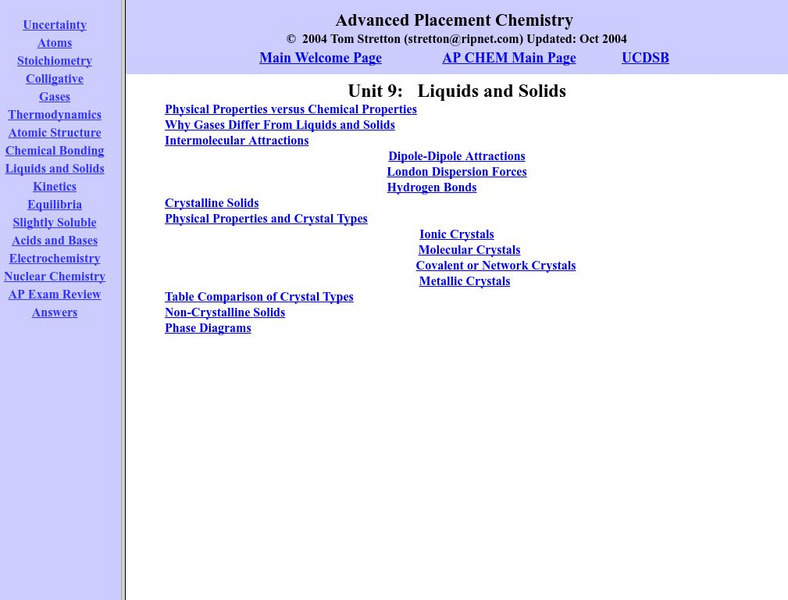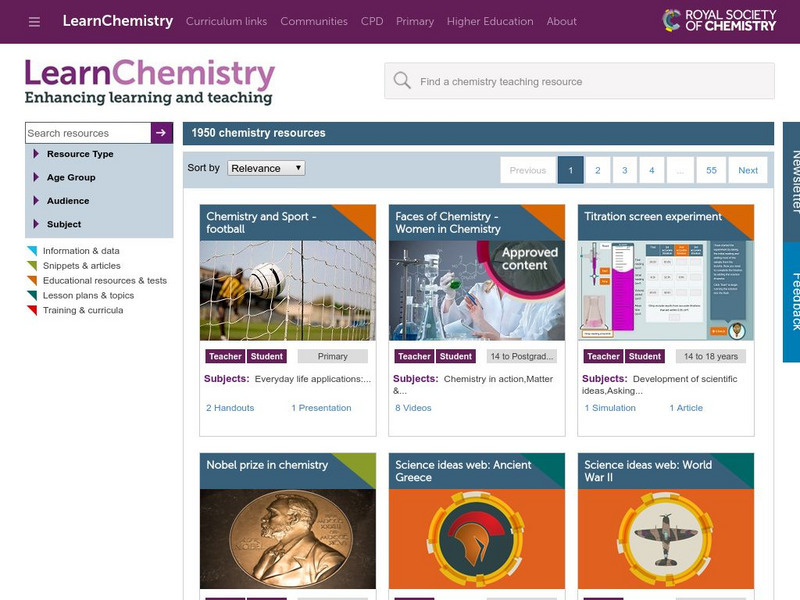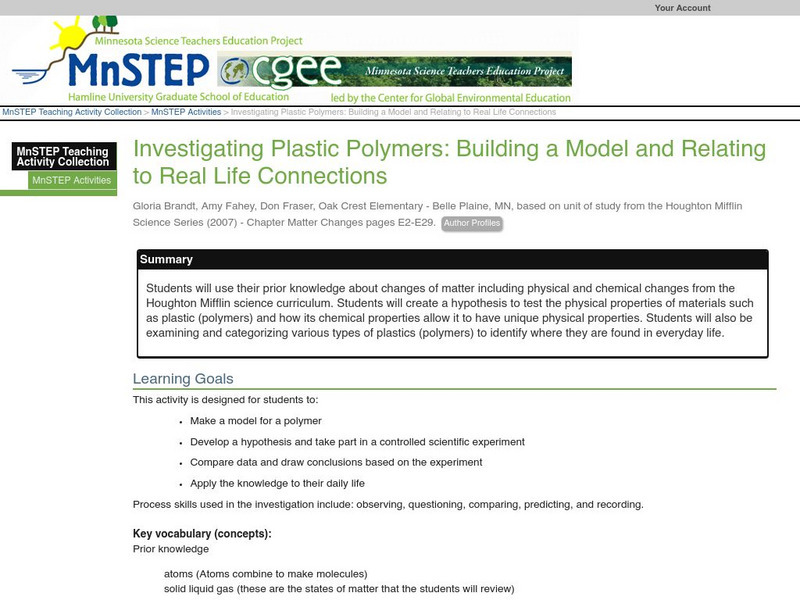Hi, what do you want to do?
CK-12 Foundation
Ck 12: Physical Science: Changes of State
[Free Registration/Login may be required to access all resource tools.] Definition of a change of state and the physical processes that cause it.
CK-12 Foundation
Ck 12: Chemical Reactions
[Free Registration/Login may be required to access all resource tools.] What happens in a chemical reaction is explained, along with how it is represented by a chemical equation. In a chemical reaction, the law of conservation of matter...
Other
Homewood City Schools: Classification of Matter
This Homewood City Schools site has an outline form and contains lots of information about the classification and composition of matter. Some of the topics covered are matter and temperature, changes in state, composition of matter, and...
SMART Technologies
Smart: Physical and Chemical Properties
Students will learn the difference between physical and chemical properties of matter.
Utah Education Network
Uen: Trb 5:1 Act. 4: Chem. Reactions Borax & Glue, Cream
For this experiment for Grade Five, students develop an understanding that chemical changes in matter do not affect the actual mass of the matter.
Other
The Science House: Dancing Spaghetti
The chemical change of matter is illustrated in this lab experiment when spaghetti is placed in a solution of baking soda and vinegar. Watch the spaghetti rise to the surface and sink again once the gas is released.
Science and Mathematics Initiative for Learning Enhancement (SMILE)
Smile: Somethin' Sweet
This site provides a lesson plan using candy making to demonstrate physical and chemical changes in matter. Includes directions to make caramel and rock candy.
PBS
Pbs Learning Media: Discovering Air
Our understanding about the air we breathe has changed dramatically through time. This illustrated timeline from the NOVA Web site tracks the changing thought on air and the creation of the Periodic Table of the Elements.
Read Works
Read Works: Mix the Old With the New
[Free Registration/Login Required] An informational text about how cooking causes changes in matter. A question sheet is available to help students build skills in reading comprehension.
Thomas Jefferson National Accelerator Facility
Jefferson Lab: Reading Passage: Properties and Changes
Read and fill in the blanks of this passage properties and changes. Each blank has a dropdown menu with choices. When you finish, click CHECK MY ANSWERS. If you pick a wrong answer, the right answer will be displayed along with your choice.
Science Education Resource Center at Carleton College
Serc: Polymers & Plastics: Classification & Models
Young scholars will use their prior knowledge about changes of matter including physical and chemical changes to examine and categorize various types of plastics (polymers). They will identify how their chemical properties allow them to...
San Diego Natural History Museum
San Diego Natural History Museum: Mineral Matters: Color
Don't be fooled! While color is one way to identify a mineral, it can often be misleading. Quartz is one example of a mineral that can change colors depending on its chemical make-up.
Upper Canada District School Board
Tom Stretton's Advanced Placement Chemistry: Liquids and Solids
Take on this self-guided advanced level e-text, and learn about the chemical and physical structure of liquids and solids.
Royal Society of Chemistry
Royal Society of Chemistry: Learn Chemistry: Resources for Students
Search from over two thousand chemistry resources for students. Options allow user to refine search to pinpoint the exact resource needed. Includes presentations, videos, worksheets, quizzes, experiments, games, tutorials, and more.
Royal Society of Chemistry
Royal Society of Chemistry: Resources for Teachers
Search from over two thousand chemistry resources for teachers. Options allow user to refine search to pinpoint the exact resource needed. Includes presentations, videos, worksheets, quizzes, experiments, games, tutorials, and more.
Science Education Resource Center at Carleton College
Serc: Investigating Plastic Polymers: Building a Model
Students will use their prior knowledge about changes of matter including physical and chemical changes from the Houghton Mifflin science curriculum. Students will create a hypothesis to test the physical properties of materials such as...
BioEd Online
Bio Ed Online: Finding the Carbon in Sugar
Students learn that fossil fuels release energy when they are burned, and this takes the forms of light, heat, gases, etc. In this lesson they explore combustion with a candle and with sugar. The lesson and accompanying PowerPoint can...
CK-12 Foundation
Ck 12: Chemistry for High School
This digital textbook covers core chemistry concepts and includes interactive features, real-world examples, and videos.
Sophia Learning
Sophia: Conservation of Mass: Lesson 2
This lesson explains the law of conservation of mass within chemical reaction with audio and quiz questions.





